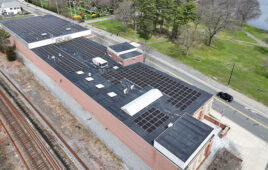Texas continues to drive innovation in the electric market, and the traditional model of large, centralized power plants serving passive consumers is steadily evolving into an expanded array of Distributed Energy Resources (DER) that enables homeowners, small business owners and the state’s largest industrial users to manage their energy consumption in a way that makes sense for them.
That’s the key finding of a new report by the Texas Clean Energy Coalition (TCEC) and The Brattle Group, detailing the growth of DER, and what it means for Texas consumers and the Electric Reliability Council of Texas (ERCOT), which manages 85% of the state’s electric load. To read the executive summary, click here.
Released today, “Valuing and Compensating Distributed Energy Resources in ERCOT,” provides a foundation for stakeholder engagement around market dynamics and policy choices that can accelerate the growth of DER, and around how it can impact resilience during cyberattacks or natural disasters like hurricanes and winter storms, grid reliability, carbon emissions and consumer choice for Texans.
TCEC executive director Elizabeth Lippincott said the rapid growth of DER — decentralized, community-generated energy — has the ability to transform the ERCOT grid.
“As solar and other technology costs continue to decline and Texans place greater value on energy resilience and environmental impacts, more energy-savvy consumers are investing in DER,” Lippincott said. “Homeowners, businesses and industrial facilities may generate their own electricity from rooftop solar panels or fast-starting natural gas micro-turbines while other electric consumers manage their energy consumption with energy efficiency and demand response.
“Add to that the increasing use of battery storage technology and we see the innovation that’s taking place in the Texas electric market,” Lippincott explained.
According to ERCOT reports highlighted in the paper, DER has seen steady growth in Texas over the past two years.
Between 2015 and 2017, DER in ERCOT increased by 62%, and by the end of 2018, there were about 1,300 megawatts of DER in ERCOT. ERCOT also reports steady growth since 2015 for DER between 1 and 10 megawatts.
While small DER of less than 1 megawatt, primarily rooftop solar installations and some natural gas-powered microgrids, is not required to be reported, some consumers do report these small installations. Just based on the voluntary reporting of small DER of less than 1 megawatt, the category nearly doubled between mid-2016 and the end of 2018. Throughout 2018, most unregistered new small DER less than 1 megawatt was solar.
Lippincott said the growth of DER comes with a host of benefits that Texas power customers clearly demand.
A recent survey by Republican pollster Glen Bolger for Conservative Texans for Energy Innovation (www.conservativetexansforenergyinnovation.org) suggests Texans overwhelmingly support policies that encourage responsible clean energy solutions rooted in innovation.
According to the survey, GOP voters in Texas believe clean energy will help the economy and create jobs (63%), improve reliability of the electric grid (63%), increase customer choice (75%), help Texas continue to lead the nation in energy technology (79%), and result in more energy innovation (81%).
“Customers can expect to pay less for electricity as they sell power back to the grid, especially during peak periods,” Lippincott said. “In areas where there is reliance on wind and solar, DER can also be deployed to help balance the grid and improve reliability. That’s a win-win for Texas.”
The complete report is available on the TCEC website at www.texascleanenergy.org.
News item from TCEC





Tell Us What You Think!